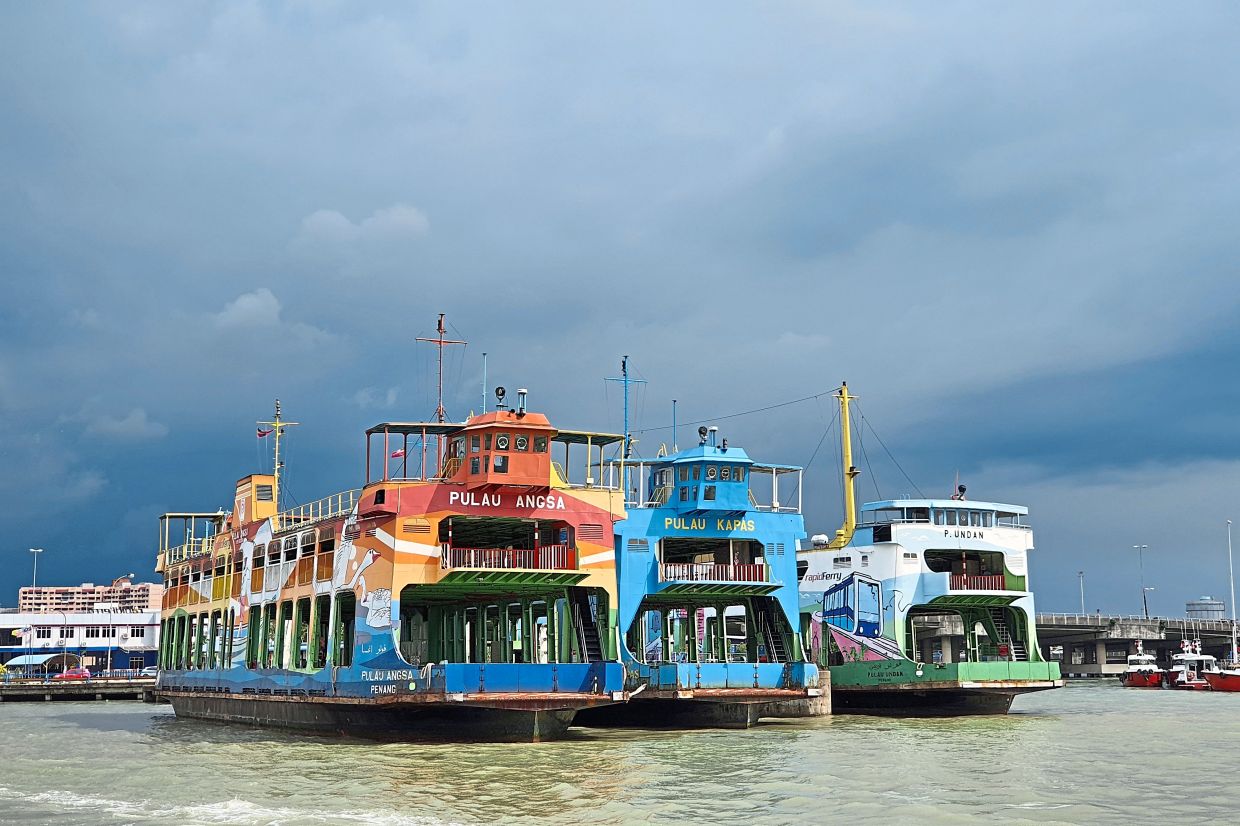
Photo: CHAN BOON KAI/The Star
Financial logic is shaking the foundations of the Penang ferry’s nostalgic appeal.
IF there’s a valid reason for Penang’s iconic ferry service to be retained, then it’s merely to preserve heritage and aesthetics.
However, that means taxpayers would have to cough up millions of ringgit for nostalgia.
I wonder how many of our politicians on the island regularly patronise the ferry service when they travel to the mainland.
Barring those accessing Butterworth town from George Town, they’ll likely use the Penang bridge to reach Seberang Prai. It’s apparent that the second link to the mainland, the 24km Sultan Abdul Halim Muadzam Shah Bridge, is greatly underutilised. Again, it wouldn’t be wrong to presume that these politicians don’t use it often either, if at all.
Like the Star Ferry service, which connects Hong Kong and Kowloon, the Penang ferry is more than just a tourist attraction – it also serves as a quick travel system.
But the Penang ferry service is also like an unwanted child. Everyone talks passionately about wanting to keep the baby, but no one wants to pay for childcare.
Talk is cheap, so show us the money, goes the adage.
Many Penang politicians – a bulk not even true-blue Penangites in the first place – talk about saving the service, but no one has practical plans to sustain it.
The cost won’t justify its upkeep – it’s that simple.
If the Finance Ministry announces that the ferry service is to be retained with an allocation of RM30mil, then it is certainly not a long-term solution. It is throwing away good money as this service is already in the intensive care unit.
Any plan should be feasible and long-term in nature.
There is little point in using political superlatives – like “acts of betrayal” – in an attempt to hang on to it.
The reality is that the Penang ferry service, with the same models, same look and feel, can no longer act as the continuing mode of transport. Period.
Like the Star Ferry in HK, the Penang ferry service has also been bleeding profusely. Passenger numbers have dropped drastically, so the operation has been running at a massive loss.
In HK, since the Star Ferry pier was moved from its old spot next to City Hall to its new location outside the International Finance Centre, passenger count has fallen sharply, so the service caters mainly to tourists and few commuters, reveal reports.
Likewise, the Penang ferry service has experienced the same fate. Over the last four years, the number of passengers has been dismal.
An average of two million users, including bicycles, lorries, cars, motorcycles and passengers, used the ferry between 2016 and 2019.
The number of passengers and motorcycles averages around a million a year, respectively.
That figure was halved this year, although the Covid-19 pandemic can take credit for that with travelling restricted.
But while the issue of ridership remains a major concern, the big question is the seaworthiness of the ferries in the future, since most of them are 47 years old.
The service experiences an average of one breakdown a month. That’s how bad it’s been. Just talk to the workers operating the ferries for details.
Sourcing spare parts from Europe has been a major challenge because the manufacturers no longer make these obsolete parts.
The government entity, Prasarana Malaysia Bhd, has been put in the unenviable position of running this loss-making entity, as it is said to cost them RM13.7mil annually to keep the ferries in service, yet it only collects RM7mil in tickets on average.
Prasarana has had to fork out RM24mil a year since it took over the service from Penang Port Sdn Bhd in 2018.
The previous Transport Minister, Anthony Loke, under the Pakatan Harapan government, had announced that Prasarana would be allocated RM90mil for upgrading the ferries and terminals. Of this, RM21mil would have been set aside to buy new passenger ferries, which presumably would be in a different form and shape from the present iconic ones.
A total of RM13.7mil from the allocation was to be spent on repairing the six existing ferries over a three-year period, but the funds never arrived.
I’m told that of the RM31mil operations cost a year, the ferries’ maintenance takes up to 50% of the budget, a bill which could increase as they age.
An annual loss of RM24mil is incurred in operating the ferry service. That’s a colossal sum to pay for the sake of nostalgia.
With an average monthly passenger and motorist count of 84,000 each, registered between 2016 and 2018, no business can afford such an operation.
Instead of making generalised and populist comments, politicians should also look at the financial details.
It makes sense to use catamarans and new water buses to replace the ferries, which would ensure the transport facility’s flow.
In fact, last year, Loke announced the use of catamarans to replace the existing ferry service.
Likewise, the iconic Penang Hill funicular railway, which climbs from Air Itam to Penang Hill, has been replaced with many different models because of maintenance and spare part issues.
It makes little sense to stubbornly insist on sticking to these old ferries purely for nostalgic reasons.
It’s not as if transportation between Penang island and Butterworth will be terminated.
I go back to my home state every month because I’m a born and bred Penang Island boy. The ferry service holds many fond memories for me, but if it needs to take a bow, then we must accept it. After all, logic should prevail.





